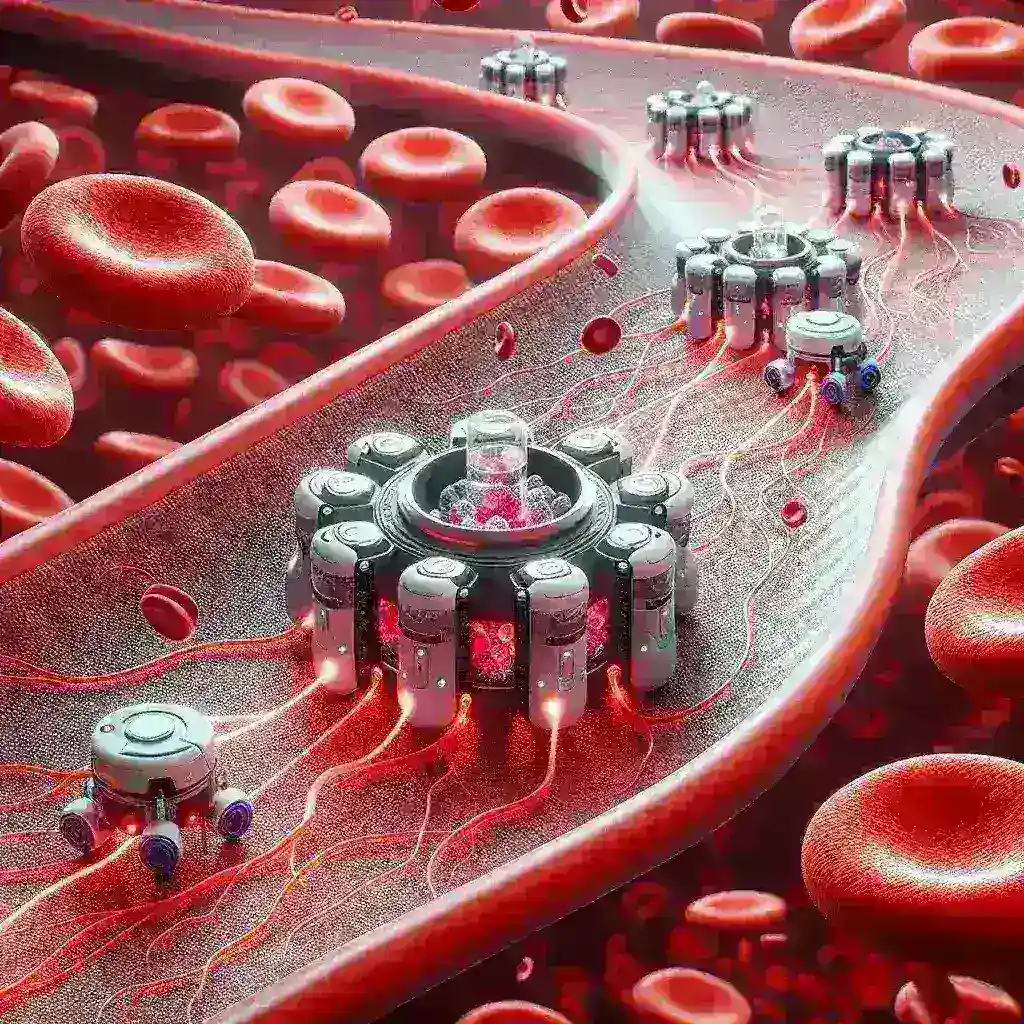Microrobots Navigate Blood Vessels to Deliver Targeted Medical Treatments
Introduction to Microrobotics in Medicine
The rise of microrobots in the medical field is paving the way for innovative treatment methods that were once considered science fiction. These tiny robots, often measuring just a few micrometers in size, are designed to navigate the complex network of blood vessels within the human body. By delivering targeted medical treatments directly to specific areas, microrobots hold the potential to enhance the efficacy of therapies while minimizing side effects.
Understanding Microrobots
Microrobots are miniature robotic devices engineered to perform specific tasks at a microscopic scale. They can be equipped with various tools and sensors, allowing them to interact with their environment in ways that larger robots simply cannot. The versatility of microrobots makes them ideal candidates for numerous medical applications, particularly in drug delivery.
The Science Behind Navigation
One of the most remarkable features of microrobots is their ability to navigate through the intricate pathways of blood vessels. This journey requires precise control and advanced engineering to avoid obstacles and reach targeted sites effectively. The navigation mechanisms can be categorized as follows:
- Chemotaxis: This method utilizes chemical signals to guide microrobots toward specific cells or tissues that require treatment.
- Magnetic Control: Some microrobots are designed with magnetic components, enabling external magnets to guide their movement within the bloodstream.
- Ultrasound Navigation: Ultrasound waves can be employed to direct microrobots, providing a non-invasive approach to control their pathway.
Applications of Microrobots in Targeted Drug Delivery
Microrobots are being researched and developed for various applications in targeted drug delivery. Here are some notable examples:
1. Cancer Treatment
Cancer therapies often involve the use of toxic drugs that can harm healthy tissues. Microrobots can deliver chemotherapy directly to tumor cells, minimizing damage to surrounding healthy cells and enhancing treatment efficacy.
2. Treatment of Cardiovascular Diseases
Microrobots can help dissolve blood clots or deliver anticoagulant medications directly to the site of a blockage, potentially reducing the risk of heart attacks or strokes.
3. Diabetes Management
For individuals with diabetes, microrobots could be programmed to release insulin in response to glucose levels, offering a more precise and personalized approach to managing blood sugar levels.
Advantages of Using Microrobots
The integration of microrobots into medical treatments presents numerous benefits:
- Minimized Side Effects: Targeting drugs to specific sites reduces the likelihood of adverse reactions in healthy tissues.
- Increased Treatment Efficacy: Direct drug delivery ensures that higher concentrations of medication reach the intended target, enhancing therapeutic outcomes.
- Real-Time Monitoring: Equipped with sensors, microrobots can provide real-time data on their location and the effectiveness of the treatment.
Challenges and Limitations
Despite their promising potential, the use of microrobots in medicine is not without challenges:
- Biocompatibility: Ensuring that microrobots are safe and effective within the human body is a primary concern.
- Regulatory Hurdles: The approval process for new medical technologies can be lengthy and complex, potentially delaying the availability of microrobot-based treatments.
- Technical Limitations: Current technology may limit the extent to which microrobots can be controlled and monitored.
The Future of Microrobots in Healthcare
Looking ahead, the future of microrobots in healthcare is bright. As research advances and new technologies emerge, we can expect to see:
- Enhanced Functionality: Future microrobots may be equipped with advanced capabilities, such as the ability to perform surgical tasks or release multiple types of drugs simultaneously.
- Integration with AI: Artificial intelligence could revolutionize navigation and control, allowing microrobots to make decisions in real-time based on specific conditions within the body.
- Broader Applications: Beyond drug delivery, microrobots could be utilized in diagnostics, imaging, and even regenerative medicine.
Real-World Examples and Trials
Several research institutions and companies are already exploring the potential of microrobots in medicine. For instance, a team at the University of California has developed a microrobot that can swim through blood vessels and release therapeutic agents at targeted locations. Clinical trials are ongoing, promising exciting developments in the near future.
Conclusion
Microrobots represent a groundbreaking advancement in medical technology, offering the potential for targeted treatments that could change lives. As research continues and technologies evolve, we are poised to witness remarkable transformations in how we approach healthcare. The journey of microrobots navigating blood vessels is just the beginning of a new era in medicine, promising a future where treatments are more effective, safer, and personalized.

Leave a Reply